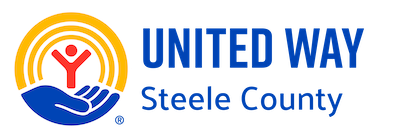The Annual Grant Making Process
It is widely known that United Way of Steele County provides funds to local human service agencies that further our vision of a sustainable and vibrant community where residents enjoy an enriching quality of life, economic opportunities, and self-sufficiency for all members. What most people don’t know is the process by which we make our funding decisions. These funds used to be provided through an “allocation” process – virtually dividing funds between member agencies based on their request and availability. Today, we award annual grants via a robust application, program review and evaluation, site visits and panel interviews with each agency which are conducted with citizen volunteers who make the final decisions about grant awards.
This tried and true objective process uses a strict timeline and application process. Strict with deadlines and formal reporting expectations, but fair and predictable - we ask all of our agencies for the same information and the timeline and application are consistent every year. We aren’t trying to spring a ‘Gotcha’ on any of our agencies. We just want good information from them that reflects the obligation we have to our donors regarding financial responsibility and community outcomes achieved by the excellent work of the agencies.
Here’s how it works:
Letters of Intent (LOI) Each December we ask agencies to give us a letter of intent for the next funding year telling us which programs they will be applying for and how much they think they’ll need. For example, we just completed this year’s funding awards. Agencies gave us their letter of intent for 2018 funding in December of 2016. These letters are used for our internal budgeting and planning. It lets us know in advance if agencies expect a greater need in the next grant cycle. The Board set an overall Grant budget in January 2017.
Grant applications are due March 31 – every year. Agency funding is not guaranteed each year but applied for annually. Agencies receive process training in early February so they can hear from us what we expect from them and any changes to the application or the process. This year we went to an online application for the first time. Applications include a description of their agency and programs, and a work plan for the upcoming funding year including planned number of clients, and units of service, and qualitative outcomes. We also receive a detailed budget, a funding plan, and an evaluation and final report for the previous year as well as prior year balance sheet, profit & loss statements and any audit conducted.
Volunteer Grant Reviewers are recruited in April. UWSC categorizes its local work by programs which help with Income (or financial stability), Education, and Health. Agency programs must fit into one of those categories to receive funding. Each category has its own review panel which has 6 to 8 community members. A training is also conducted for these volunteers in early April, at which we distribute copies of the applications in their respective categories and the objective criteria by which reviewers assess the merits of each program. (Agencies also received the same criteria at their training so they can write their applications to those criteria – kind of like an open book test!) We ask panel members to read the applications in advance of the interviews to become familiar with the program outcomes and formulate questions to be asked of the agency during the interview.
Site visits, if requested, happen late April.
Panel Interviews happen in early May. This is when the review panel gets to talk to agency representatives, staff and board members. Agencies give a program overview then answer questions – some pre-determined and some program specific. We do our very best to create even ground for programs that are quite different from each other and don’t easily lend themselves to comparison. It’s like comparing apples and automobiles. We do this by asking objective questions and expecting the same information from every agency.
The last thing the panel does at the end of each review day is to come to consensus about how much each grant award should be. It is true that agencies ask for more funds each year and that the total request is generally more than our budget allows from fundraising. This year we granted $500,000 but $573,000 was requested. As Executive Director, I have no vote in this final process – it is all in the hands of the volunteers who respectfully and thoughtfully work through this process of making a decision they can all agree on based on the information received through the application and the interviews. Panel members often tell me how rewarding the process is. We are grateful for their service to our community.
Funding Recommendations Community Investments Committee reviews the panels’ funding recommendations and delivers it to UWSC Board of Directors for final decision in late-May.
As you can see this is a healthy process which takes many months to complete and which is intimately tied to our Annual Fundraising Campaign achievement. We can’t award what we don’t bring in. United Way of Steele County is not a stand-alone organization but a community asset with a mandate to bring as many local stakeholders together to solve the community’s most pressing issues. We look out for the greater good of our entire community through objectivity, inclusivity, and a vision toward a better Steele County.
Kim Schaufenbuel is the Executive Director of United Way of Steele County. She can be reached at 507-455-1180 or via email at kschaufenbuel@unitedwaysteelecounty.org.
